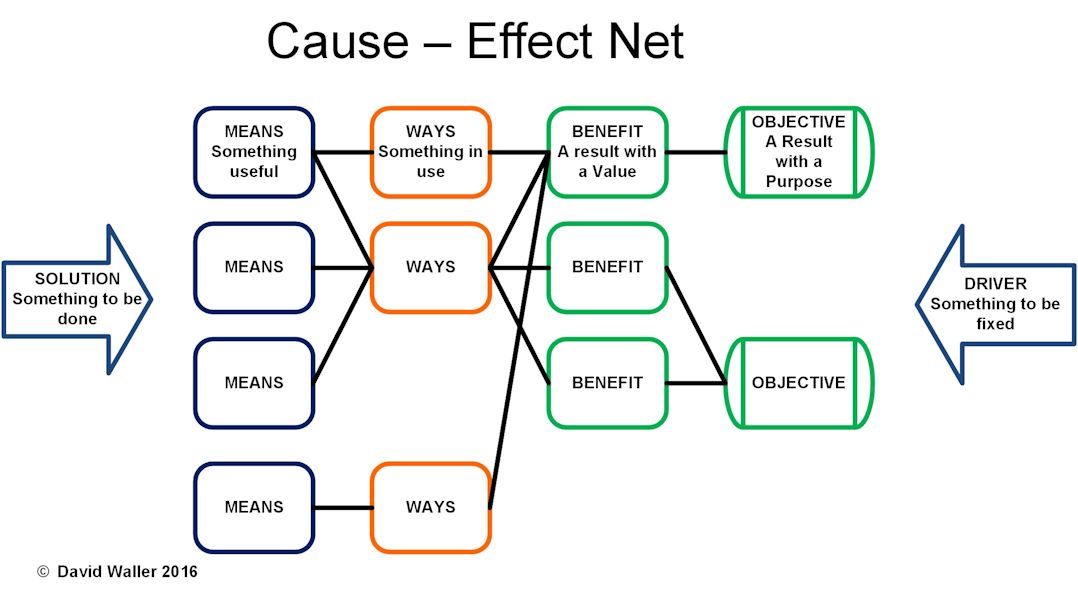Very Simple Models for a Complex World
- Details
- Published: Saturday, 06 April 2019 11:26
Success is hard
In the world of programmes and projects, success is hard to achieve and often hard to prove. When your measurement of success isn’t hard cash but people’s health and happiness, life gets even more complex.
Programmes struggle because we dive into the complexity without stepping back into the basic principles that show the key things they are meant to achieve.
People often talk of chains of cause and effect, however, these are more usually cause-effect nets. It’s rarely the case that A links to B links to C in nice neat straight lines. Here is a diagram that shows in very basic terms the connections between means, ways and ends.
The simplest model, the cause-effect net between the proposed solution and results

Drivers are things that make us take action. They can be instructions from above, practical problems we want fixed or things we believe ought to be.
The bounded solution is what we will do within feasible limits. It has to have boundaries to keep it manageable.
We take appropriate resources, use them well and achieve good results for the right people (for given definitions of appropriate, good and right in our specific context. After all, decision making is a subjective exercise).
Let’s bring this closer to home for those of us interested in projects and information. Here’s a generic model of any information based project.
An information project, a less simple model

I haven’t yet found an information project that can’t be overlaid onto these boxes. The connectors may move and not all the boxes will be needed but the general concepts will apply. We get, change and send information in ways that highlight its relevant attributes (cheap, quick, etc.) so it is used to best effect for the chosen stakeholders.
Let’s make this more specific. Integrated Care Records is a public sector topic that’s pretty popular at the moment. Here’s a hypothetical case that ought to work as a broadly applicable example of the principles.
Data driven integrated care, a bit more specific

Here, service leaders are the people who control the care, e.g. commissioners of services, CxO suite in private care. Who they are will depend on the scale of the programme or project in question. Service providers can be the institutions delivering services, down to individual staff members and again this depends on scale.
It’s still pretty generic. What happens when we concentrate on one requirement? Someone who commissions care believes an integrated care record can bring more empowerment to service users. The next diagram shows a) why they believe this is a good thing and b) how the record will empower the service user.
A simple model, integrated care to empower service users

There’s a whole separate discussion to be had on who a project’s actually for and what they really want from it (see Naive questions). Looking at the objective of ‘Less demand on resources’, it’s pretty clear that the benefit recipient here is the commissioner who’s paying, not the service users. Users may get some value out of this project but they’re not the reason why it’s happening.
We have created a simple model of a complex project. It gives us the opportunity to agree that it’s the right project for the right reasons. It’s certainly better to have the arguments about the project’s purpose at the beginning than argue about its fitness for purpose (that hasn’t been agreed) once most of the money has been spent. When someone asks what it’s all for, we have the makings of a sensible reply.
Try this on one of your own projects. It should trigger some interesting debate
